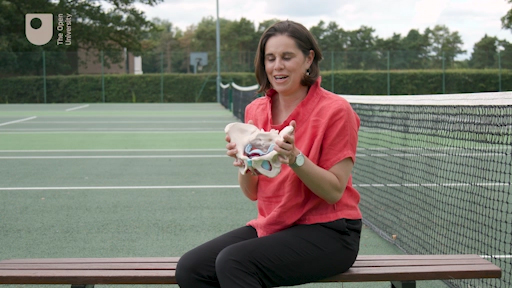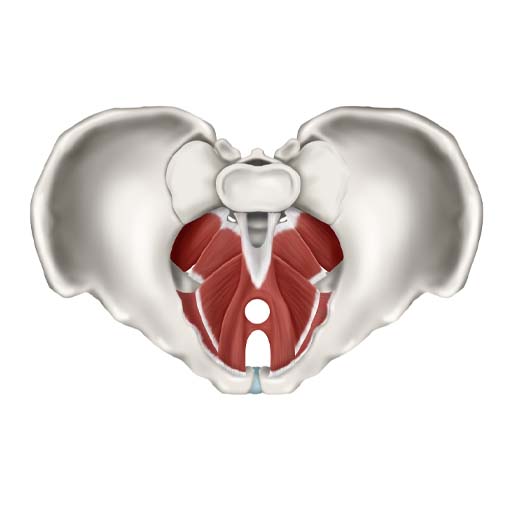2 Introducing the pelvic floor and its muscles
Understanding where the pelvic floor is and its purpose is of key importance when it comes to working with athletes. By having this knowledge coaches, trainers and athletes are able to understand the causes of dysfunction and be proactive with their programming to help the women they are supporting.
You’ll start with a video to introduce you to the pelvic floor.
Activity 1 What is the pelvic floor and what should it be doing?
Watch the video below where Baz Moffat of The Well HQ [Tip: hold Ctrl and click a link to open it in a new tab. (Hide tip)] introduces the pelvic floor, explains its purpose and the signs that it’s not functioning properly to look out for.
Then answer the following questions:
- What role does a healthy pelvic floor play?
- What are the signs that the pelvic floor is not functioning correctly?

Transcript
Discussion
- The role of the pelvic floor is to keep us dry by preventing any leakage of urine, while we are doing whatever activity we want to do. The pelvic floor should also be able to withstand the increase in abdominal pressure caused by laughing, coughing and sneezing. Running and jumping also increase abdominal pressure and should be able to be performed without urine leakage.
- The main sign of pelvic floor dysfunction is leakage, or urinary incontinence, when laughing, coughing, sneezing, or taking part in exercise. However, urge incontinence, where you suddenly need to go and cannot hold on, and pelvic pain are also signs. Fortunately, in most cases dysfunction can be treated or improved through specific exercises.
Urinary incontinence (UI) is also referred to as stress incontinence (SI) due to it being caused by increased stress on the pelvic floor muscles.

